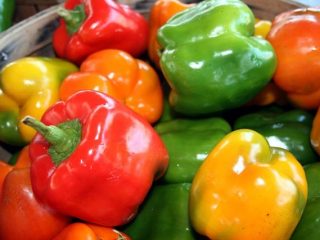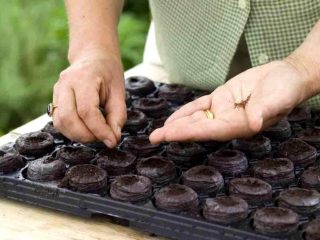Content
The homeland of sweet peppers is the same as bitter ones: Central and South America. There it is a perennial plant and weedessentially maintenance-free. In more northern areas it is grown as an annual.
In the CIS, bell pepper is called bell pepper, although there is no such definition anywhere else in the world, even among the Bulgarians themselves. The secret of such a unique phenomenon is revealed simply: warmer Bulgaria was the main supplier of this southern culture to the USSR.
Over the past hundred years of the active spread of sweet peppers in world cooking, more than 1000 varieties of this vegetable have been developed. Moreover, a special variety of pepper varieties has emerged in the last thirty years. If back in the eighties of the last century bell pepper was only yellow, red or green (technical stage of ripeness), now you can choose pepper of almost any color.
The color of peppers varies from almost white to almost black. There are dark brown, lilac, purple, two- and three-color peppers.
According to their purpose, modern varieties of sweet peppers are divided into:
- for salad;
- for conservation;
- for pickling;
- for drying;
- for freezing;
- for stuffing.
The best varieties of thick-walled peppers
For salads use juicy thick-walled peppers. There are a lot of varieties. In past seasons, some of them were recognized by gardeners as the best in such parameters as taste, resistance to diseases and adverse weather conditions, and productivity.
Variety Fatty
Mid-season variety with attractive bright fruits. It takes 120 days before harvest. Can grow in open beds and greenhouses.
Bush height 55 cm, semi-spreading. It is formed by removing side shoots. The variety has bright green leaves and red fruits when ripe. The view is quite decorative.
The peppers are almost equal in size in length and base diameter. Length 10 cm, base diameter 8 cm. The weight of pepper is usually up to 130 g, sometimes it can reach 200 g. The thickness of the pericarp can reach 10 mm, usually about 8 mm.
The advantage of the variety is its excellent taste and good keeping quality.
The yield of the variety is 4-4.5 kg/m², subject to proper agricultural practices.
To obtain strong seedlings, seeds of this variety are sown on seedlings in the last two weeks of February. Picking, if required, is carried out at the cotyledon stage. Seedlings are planted in a permanent location in May, after the onset of stable warm weather. Planted according to the 0.4x0.6 m pattern.
Variety Siberian bonus
A very interesting variety of pepper that has orange fruits when fully ripe. You can joke about northern dwarf oranges, since the bush is only 80 cm high. At the stage of technical ripeness, the color of the pepper matches the color of the foliage. After the fruits ripen, the bush transforms, attracting attention with a combination of green foliage and large bright orange peppers.
One bush bears up to 15 large fruits, cubic in shape and almost the same size. The weight of peppers reaches 300 g, the wall thickness can be up to 1 cm.
Peppers do not contain capsaicin, retaining their peppery flavor. The pulp is tender and sweet. The fruits ripen well, maintaining elasticity.
The average yield of the variety is 3 kg per bush. This significantly exceeds the performance of many other varieties, the yield of which is preferably calculated per square meter. Bushes are planted at the rate of 6 plants per 1 square meter. m. The variety can grow in open beds and in closed ground.
To increase the yield of a variety, it is necessary to follow agricultural techniques, apply fertilizing on time, follow the watering regime and timely harvest fruits at the stage of technical maturity.
The “Siberian Bonus” variety is sown for seedlings in late March – early April. For seed germination, a constant temperature of +27°C is required. They are transplanted to a permanent location at the end of May, when the frosts finally end and the earth warms up.
To accelerate seed germination and increase ovaries, you need to use specially developed growth stimulants.
Variety Red Giant
Contrary to the ambitious name, the fruits of this variety cannot be said to be very large. Rather larger than average. Their weight is 250-300 g. The fruits are somewhat similar to a crimson-red parallelepiped with dimensions of 20x10 cm and a pericarp thickness of up to 1 cm. You can get up to ten of these peppers from one bush.
The bush reaches a height of 120 cm. The best option for planting plants in the ground is 0.7x0.4 m. The variety is adapted for open ground, but it can be grown in a greenhouse. The seedlings are planted in a permanent place 2.5 months after sowing the seeds.
Variety Ox's ear
Based on its shape, it would be more logical to give this variety the name “Horse Ear,” but it probably seemed dissonant to the creators.
The variety is mid-season, producing fruit a month and a half after the seedlings are planted in a permanent place. The bush grows up to 70 cm. It can be grown in shelters and in open beds.
The fruits are long, cone-shaped, red in color when ripe. The length of peppers is usually up to 12 cm. In favorable conditions they grow up to 20 cm. The average weight of the fruit is 150 g. The thickness of the pericarp is 7 mm.
The advantages of the variety are good shelf life and resistance to viral diseases.
The techniques for growing Ox Ear seedlings are the same as other varieties. Some differences already exist during the period of pepper growth in a permanent place.
Features of agricultural technology
Being a large-fruited variety, ox ear requires increased soil fertility. Agricultural seed producing companies recommend taking additional measures to increase soil fertility. In particular, plant peppers in places where carrots, cabbage, beets, pumpkins or legumes other than beans were previously grown. You can’t plant peppers where other nightshades grew before, since plants of the same family need the same microelements. The composition of the soil after nightshade will be depleted.
It is recommended to plant ox ear according to the 40x40 cm pattern. When planting, rotted organic matter is placed in the holes. Without adding organic matter, the fruits will grow small. Two weeks after planting, during budding and ripening of the fruits, the bushes are fed with special fertilizers or organic solutions. Can be used potassium sulfate, urea and superphosphate in an aqueous solution at the rate of two teaspoons of each element per bucket of water.
Bushes should be protected from the summer afternoon sun. Watering should be regular and plentiful. We should not forget about weeding and loosening the soil. If agricultural practices are followed, up to 3 kg of peppers can be harvested from one bush of the Ox’s Ear variety.
Alba variety
A variety of Moldavian origin that tolerates heat well. The ripe fruit is orange-red in color, weighing up to 200 g. Wall thickness is 7 mm. Conical shape. The fruits have good keeping quality and excellent taste.
A bush up to 70 cm high with a very high yield. With proper care it gives up to 8 kg/m².
Variety Belozerka
The homeland of the variety is Bulgaria. Mid-early. The growing season is 4 months. Recommended for open beds and greenhouses. Standard bush, up to 60 cm high.
At the stage of technical ripeness, the cone-shaped fruits have an interesting light yellow color. They turn red as they mature. Fruit length 12 cm, base diameter 6 cm. Pepper weight 100 g. Pericarp thickness 7 mm.
The advantages of the variety include: resistance to the most common diseases, good keeping quality of fruits, excellent taste, stable high yield, independent of weather conditions. 8 kg of fruits are collected from one square meter.
Variety Shorokshary
An early ripening variety, fully ripening in 120 days. Ripe peppers are red in color, shaped like a quadrangular truncated pyramid with smoothed corners. Weight up to 150 g. Pericarp 7 mm. The main advantages of the variety are resistance to blossom end rot and high yield.
Apical rot
On peppers, this disease does not appear at the top, like in tomatoes, but on the side surfaces of the pod.Initially, fluid-filled areas appear, later these areas enlarge, become black/brown, leathery and dry. Gradually, the affected surface becomes concave. The areas can be up to 8 cm in size. Peppers affected by the disease ripen prematurely and can be secondarily infected with pathogenic fungi.
Reasons for appearance
The disease occurs when there is a lack of calcium in the fruits. The plant cannot provide the fruits with a sufficient amount of calcium if there are sharp fluctuations in soil moisture (drought/waterlogging), if there is an excess of nitrogen in the soil, or if the roots are damaged during loosening.
The combination of too high a temperature (more than 25 degrees) and low air humidity (less than 50%) is also very undesirable. This combination usually occurs in early spring, when month-old peppers are very sensitive to these factors, and daily temperature changes are very large.
Protection
- Regulation of air temperature and humidity in greenhouses.
- Regular watering prevents the soil from drying out, but without waterlogging.
- Spraying plants with calcium nitrate.
The benefits of bell pepper
Sweet peppers are a storehouse of vitamins and minerals. The vitamin C content in it is higher than in black currants. Lemon, which is inferior in content of this vitamin even to orange, is at the end of the list.
The main advantage of bell pepper is the combination of vitamin C with vitamin P, which reduces the permeability of the walls of blood vessels.
Forty grams of pepper is enough to obtain a daily dose of beta-carotene.
Pepper is rich in B vitamins.
The mineral composition of pepper is even more impressive. It contains all the microelements necessary for life.
Sweet pepper is recommended for people engaged in intellectual work and the elderly. It is useful for those suffering from diabetes.
Harm of sweet pepper
But you shouldn’t get carried away with the medicinal properties of pepper either. Vitamin C does not accumulate in the human body. Its excess is excreted in the urine during the day. With constant intake of large doses, the body gets used to dumping vitamin C. After stopping taking this vitamin, the body continues to eliminate the same amount. The result is hypovitaminosis.
An excess of vitamin A is bad for the liver. An overdose of B vitamins leads to fatty liver and impaired renal function. An overdose of B vitamins also causes allergies.
Pepper is harmful to people with stomach or duodenal ulcers. It should not be consumed by those who have low blood pressure, since pepper thins the blood and the blood pressure drops even lower.
The old adage “everything is good in moderation” is very true when it comes to peppers.

















